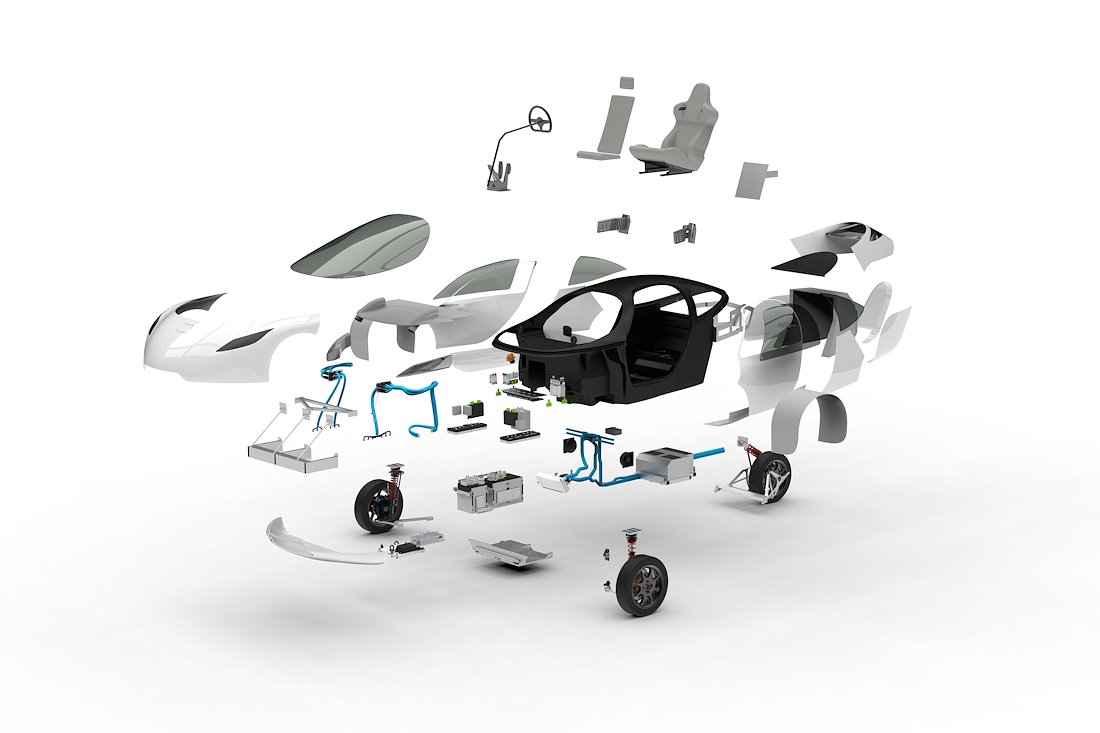
Indigo set out to create a concept car and test mule vehicle for the in-wheel motor propulsion and active suspension technology. Originally my role was to gather design research and create personas for the market segment that would use this car, if it was sold in mass production. My role quickly evolved into being the vehicle program manager, because the human is the most important, most complex, and hardest to replace part of any vehicle. This meant that I took the user needs that an Industrial Designer and I gathered and turned them into product specifications like acceleration, top speed, cargo space, seating configuration, wheelbase, and styling.
As the Lead Design Engineer and Project Manager I created the schedule for chassis (body in white), powertrain, suspension, battery, and styling development. To meet our aggressive development schedule I prioritized subsystem development that allowed design release for the longest lead time parts, like the chassis, and allowed further flexibility for the company’s core technology. This meant that I worked with all of the subsystem owners to negotiate space constraints, mounting holes, and structural needs on the chassis. I personally designed 95% of the carbon fiber monocoque chassis, human packaging and managed the entire ~2000 part vehicle assembly using Solidworks. I released the chassis tooling CAD, and received the finished part 6 months later on the exact day set out in the schedule.
Throughout the development process I used a variety of processes to improve quality and manage timeline, and engineering risks such as: SAE standards, NHTSA FMVSS’s, dFMEA’s, test fixtures, and a revamped internal design release process. I pushed to create a design release process that was more in line with industry standards, and created redundant checks on safety critical items. This improved process used the ASME Y14.5 GD&T Standard in our prototype and production level parts to communicate quality requirements and design intent. Each subsystem had to have a documented dFMEA to progress from a concept to a released part. I often told my team that proper documentation and GD&T is the tooth brushing of engineering: it may not be enjoyable now, but it pays off over time.
User Centered Design Research Process
/background(fff)/1920x1080.jpeg?auto=webp)
How I led the design research process for the concept car.
(I also made the graphic)




Carbon Fiber Chassis
In an effort to show off the ultimate potential of the company the executives pushed to make the chassis and safety cell carbon fiber. I created 95% of the CAD and managed the contract manufacturer relationship to build the chassis in 6 months.
I spearheaded a qualitative and quantitative design research study to determine the specifications, schedule, and market fit for the company’s novel automotive technology. I then executed on the specifications to actually design and build the human packaging, vehicle architecture, and HMI using a fast-paced iterative approach. My user research and project management aligned company strategy, engineering requirements, and business development to form a cohesive brand.










CdA
0.21
Corning Stability
- 1.15 g
Acceleration
- 0-60 mph : 6.6 secs
Range
- 125 miles
